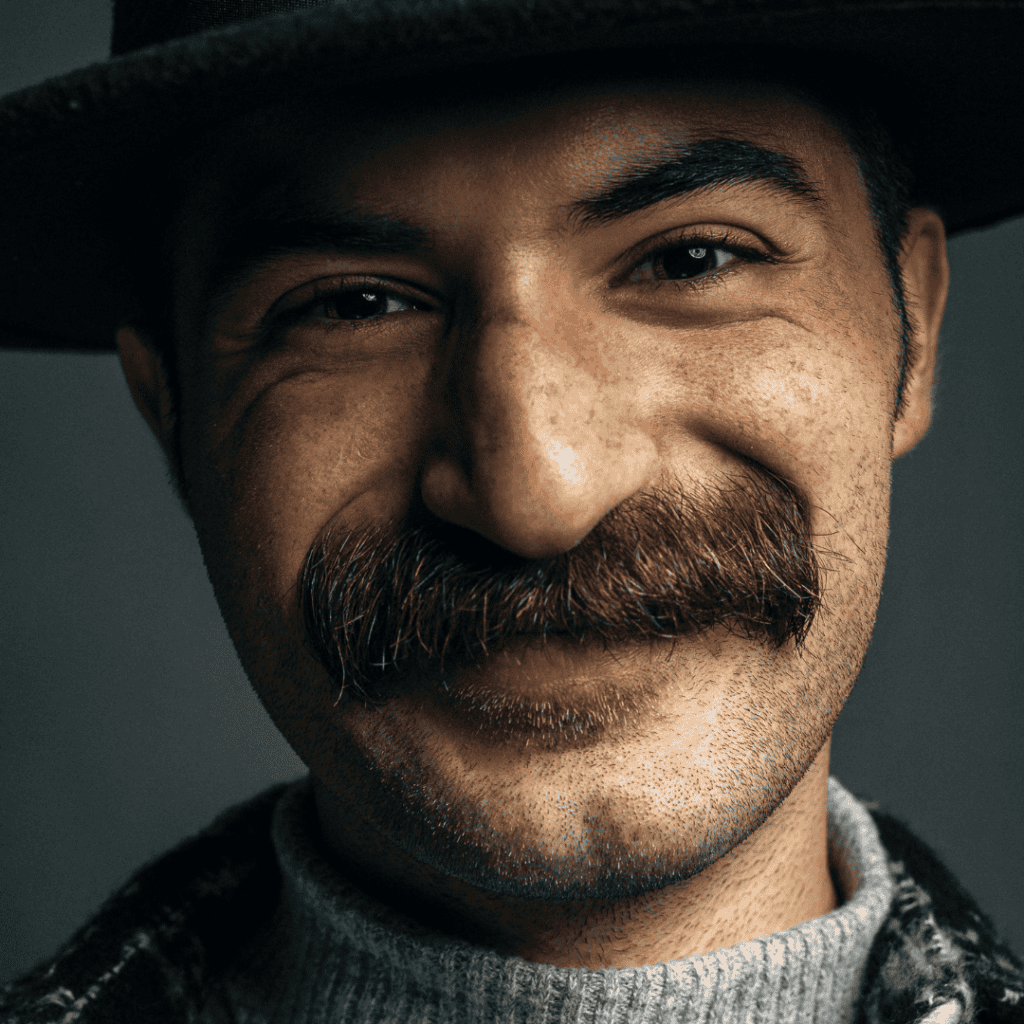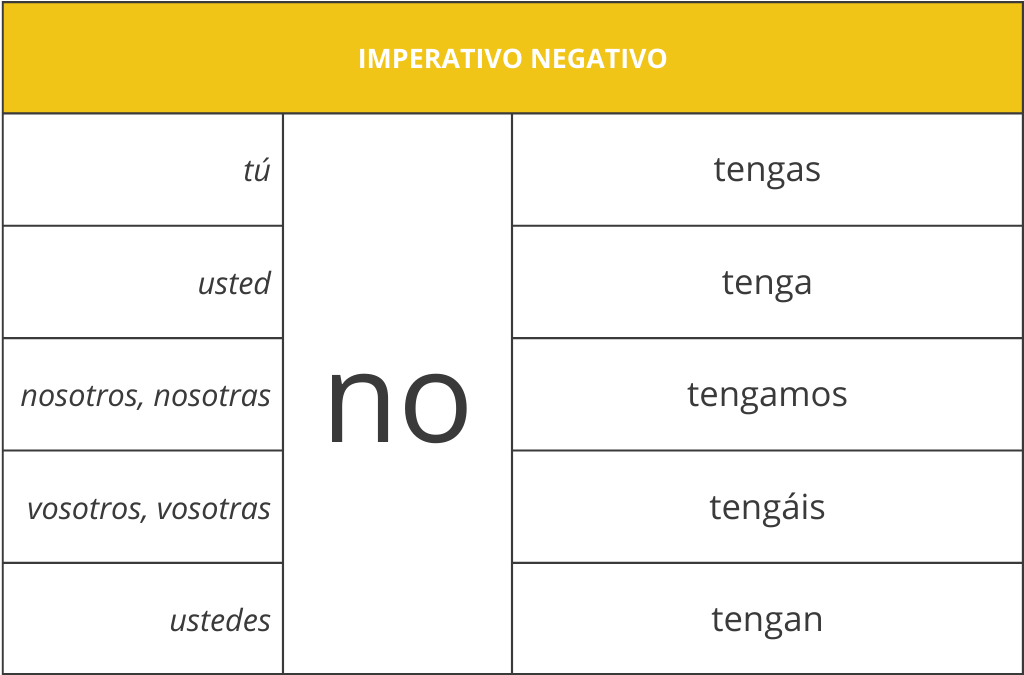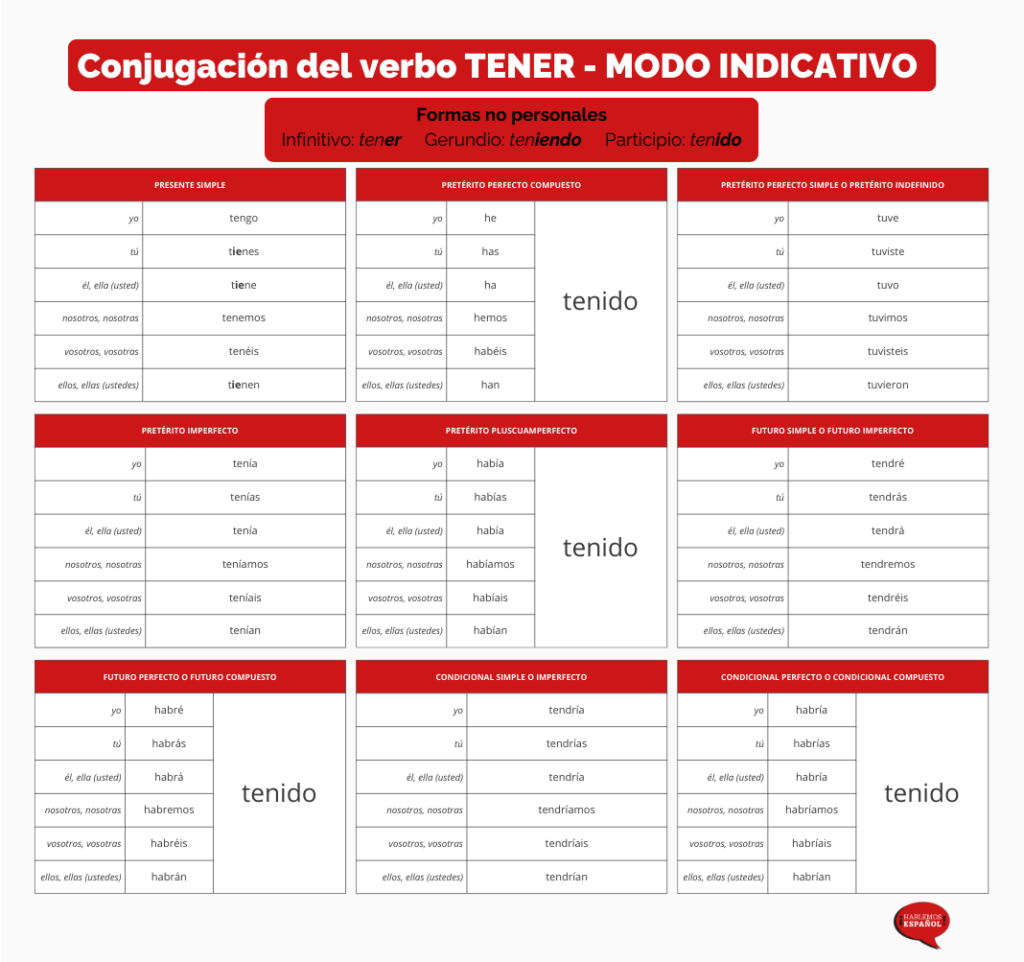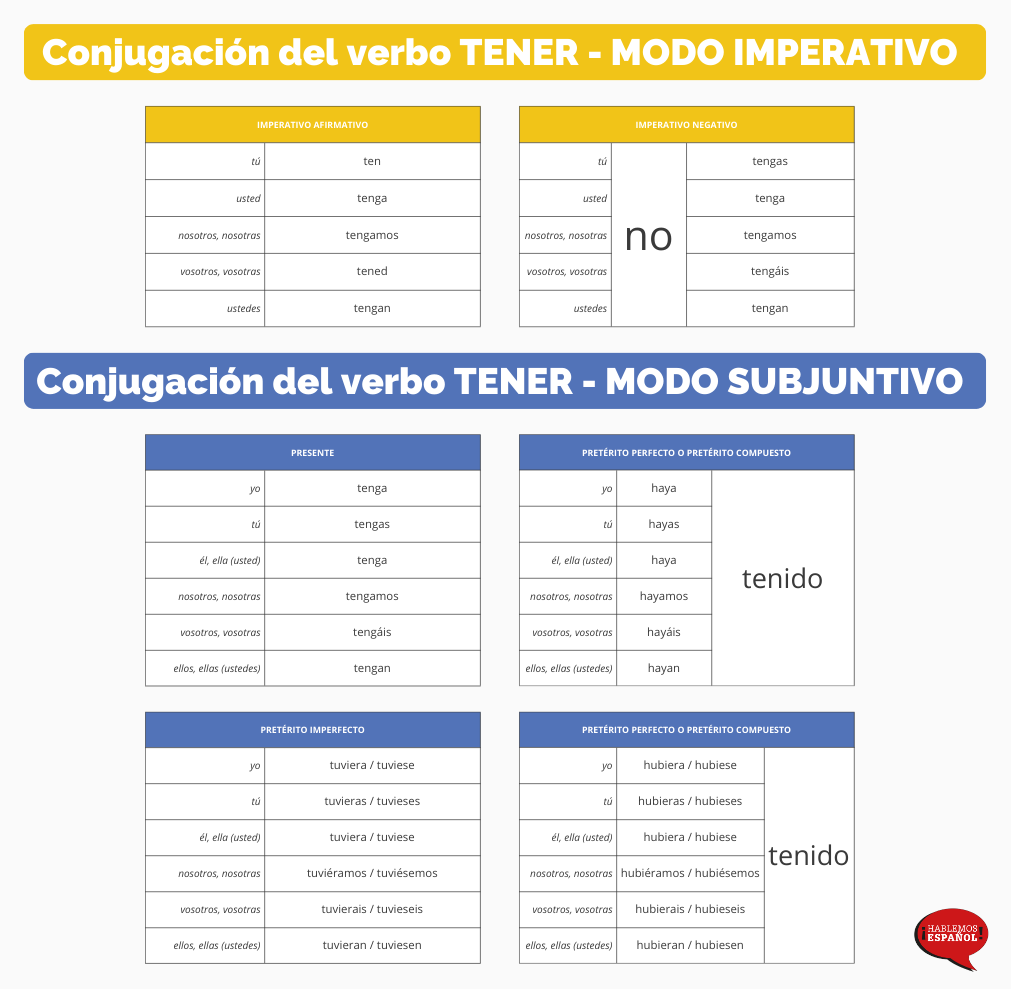TENER - Conjugation and Uses (A1-B2)

-
Save
The verb TENER in Spanish is one of the most used ones, but at the same time, for many students understanding some of its uses can be a bit challenging. To make your life a little bit easier, we have prepared this post with all the secrets of this very important verb in Spanish.
In this post you'll find:
- The complete conjugation of the verb TENER,
- all its uses from A1 to B2.

-
Save
- Marta, ¿cuántos años tiene Ramón?
- No lo sé, tendrá unos 50 años. Tiene muchas canas.
- ¿50? Yo creo que tiene más. Ya no tiene trabajo, está jubilado y tiene 3 nietos.
- Es verdad no tiene que trabajar.
- Claro, por eso nunca tiene sueño. Tiene mucho tiempo para dormir.
- Ay, Lola, ¡qué cosas tienes!
Conjugation (A1)
Before learning the uses and expressions of this verb, we need to know how to conjugate it. Here is the conjugation of the verb TENER in the present tense:

-
Save
Basic uses
Age (A1)

-
Save
- ¿Cuántos años tienes?
- Tengo 59 años, ¿y tú?
- Yo tengo 61 años.
To talk about someone’s age we use the verb TENER and not SER.
Mi hermana y yo tenemos 34 años. 👍
Mi hermana y yo somos 34 años. ☠️
Relations (A1)

-
Save
Mi abuelo tiene una novia nueva. Se llama Paula. Yo tengo un hermano pequeño, Carlos. La novia de mi abuelo tiene un amigo coreano que se llama Jae-Sung.
In Spanish we express relationships and connexions between people with the verbs SER and TENER.
Juana tiene dos hermanas: Marisa y Clara.
Marisa y Clara son las hermanas de Juana.
Possession (A1)

-
Save
- ¿Tienes un lápiz azul?
- Sí, tengo dos. ¿Necesitas uno?
- Sí, por favor. Tengo muchos, pero hoy no tengo en la mochila.
- Claro. Aquí tienes.
We use TENER to express possession or ownership.
Physical description (A1)
- ¿Cómo es Marta?
- Es alta. Tiene el pelo largo, rizado y rubio. No tiene gafas y tiene la nariz muy pequeña. Tiene los ojos azules y muchas pecas.
We use TENER with body parts (nose, eyes, hair…) or different elements (glasses, tattoos, beard…) for physical descriptions. Have a look at the following examples:

-
Save
Marcos tiene barba.

-
Save
Alberto tiene bigote.

-
Save
Tengo una cicatriz en la rodilla.

-
Save
Tienes la nariz muy grande.

-
Save
Mi amiga tiene los ojos marrones.

-
Save
Amber tiene muchas pecas.

-
Save
Marina tiene el pelo largo y rizado.

-
Save
Sonia tiene el pelo rosa y liso.
Physical states (A1-A2)
There are some basic expressions with the verb TENER that are not like the ones we’ve seen so far. They’re physical states that you need to learn to communicate with ease in Spanish.
TENER frío
‘sentir frío’ / ‘to be cold’

-
Save
Juan siempre tiene frío. Lleva chaqueta incluso dentro de su casa.
TENER calor
‘sentir calor’ / ‘to be hot’

-
Save
¡Uf! Tengo mucho calor. Necesito aire acondicionado.
Attention! TENER frío or calor is not an objective thing it’s just a feeling and it depends on the person. There are people who are cold with 24ºC, but that doesn’t mean that it’s cold (hace frío), it just means that the person “feels” cold.
TENER hambre
‘necesitar comer’ / ‘to be hungry’

-
Save
Juan, creo que el perro tiene hambre.
TENER sed
‘necesitar beber agua’ / ‘to be thursty’

-
Save
Las chicas tienen sed porque han corrido 12 kilómetros.
TENER sueño
‘necesitar o querer dormir’ / ‘to be sleepy’

-
Save
Paloma, ¿tienes sueño? Te vas a dormir encima del café.
Attention! Alicia tiene sueño is not the same as saying Alicia está cansada. When we use TENER sueño it means the need for sleeping, but when you’re tired (ESTAR cansado(a)) you might just need a quiet moment to yourself, to sit for a while, a nap or a break from work, but NOT necessarily to go to sleep.
Conjugation (A2)

-
Save

-
Save

-
Save

-
Save
Two-verb constructions with TENER
TENER que + infinitive (A2)
With the verbal construction TENER que + an infinitive verb, we express obligation, need or strong recommendation. Look at the following examples:
Mañana tengo que trabajar y tengo que terminar el informe. (obligation)
Las personas tenemos que beber agua para vivir. (need)
¿Vas a ir a Tenerife? Tienes que ver el Teide. ¡Te va a encantar! (strong recommendation)
We can express absence of obligation or necessity by using no before the periphrasis.
No tenéis que hacer el ejercicio número 5, es opcional. (it’s not an obligation)
No tienes que comprar café, ya tenemos en casa. (it’s not necessary)
Conjugation (B1)

-
Save

-
Save

-
Save

-
Save

-
Save

-
Save
Conjugation (B2)

-
Save

-
Save
Advanced uses of TENER que + infinitive (B1-B2)
In some cases circumstances force you to do something or you have no other choice, for this we use the periphrasis TENER que + infinitive, but with the verb TENER in pretérito indefinido.

-
Save
Ayer cuando estábamos de picnic en el parque empezó a llover. Así que tuvimos que volver a casa y hacer el picnic en mi salón.

-
Save
- ¿Qué hiciste ayer?
- Nada interesante. Tuve que quedarme en casa y cuidar a mi hermano porque mis padres tenían planes.
Other times things were not the way we wanted them to be or we would like to be able to change the past or to have acted in a different way. To express this in Spanish we use TENER que + infinitivo perfecto, but the verb TENER is conjugated in the pretérito imperfecto or condicional simple.
He suspendido el examen de geometría. Tenía que haber estudiado más.
He suspendido el examen de geometría. Tendría que haber estudiado más.
And what happens if instead of the perfect infinitive we use the “normal” infinitive? Well, it changes the meaning of what we want to express. Look at these examples:

-
Save
Ayer no fui a la fiesta porque tenía que estudiar más para el examen de geometría.

-
Save
El jueves tengo el examen de geometría. Tendría que estudiar más porque es muy difícil.
In the first example we’re talking about an obligation in the past. However in the second one we’re not talking about the past. We have the intention of doing something in the present time or in the future.
Complete conjugation

-
Save

-
Save

-
Save
Would You like to Take Your Spanish to the Next Level?
Whether you’re a complete beginner or you’re an advanced student, with us you’ll reach the next level of Spanish quickly and easily. With 24 Levels to Spanish fluency, the next level is always close by, so you will never lose motivation.
You can choose between:
In both cases, you’ll learn Spanish using our successful 24 Level System to Spanish Fluency® and our unique Spanish teaching methods.

-
Save











